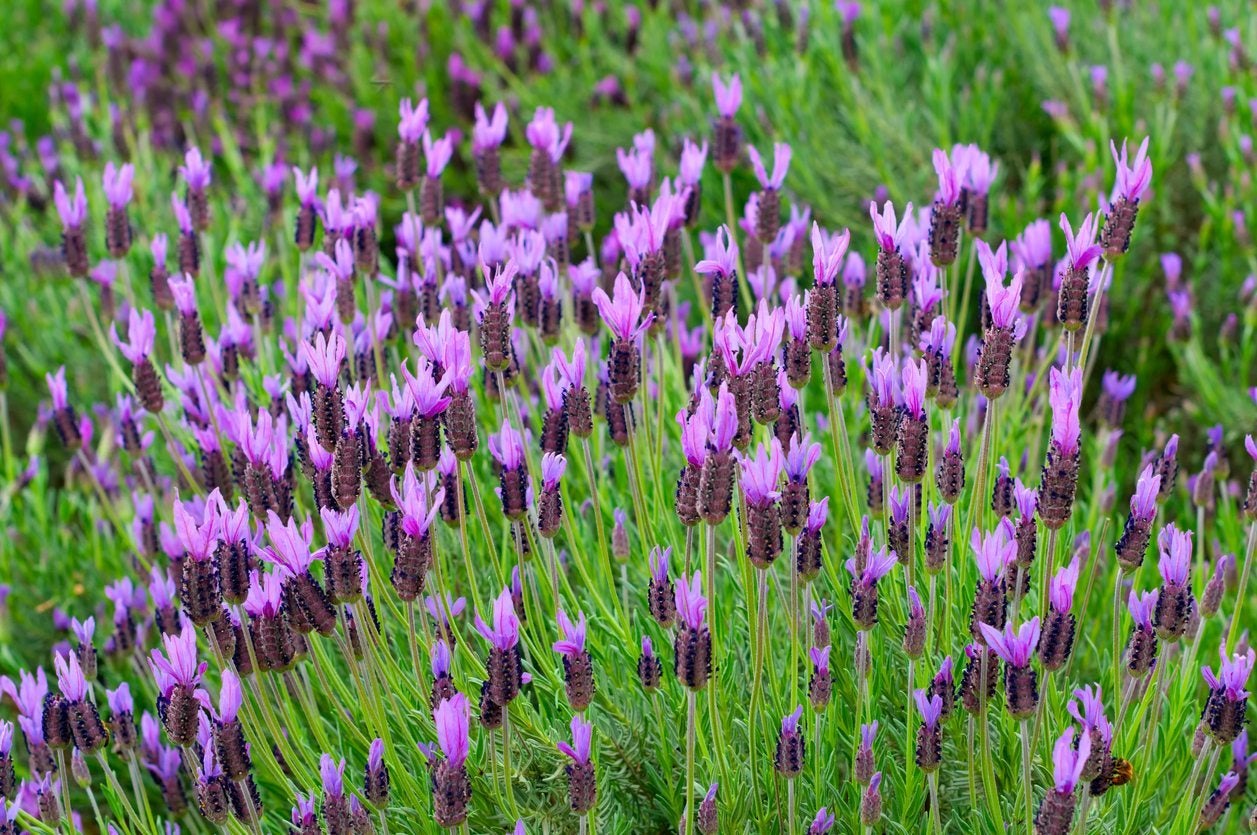Spanish Lavender Plants – How To Grow Spanish Lavender In The Garden


When you think of lavender, it is probably English and French lavender that comes to mind. Did you know though there is also a Spanish lavender? Spanish lavender plants can give you the same aroma and delicate flowers as the English variety, but they are better able to tolerate hot climates.
Spanish Lavender Information
Spanish lavender, or Lavendula stoechas, is just one of about 40 varieties of this fragrant herb. It is native to the hot, dry climate of the Mediterranean region, so it thrives in warmer climates and is hardy to zone 8. Growing Spanish lavender is a good alternative to the more common English lavender if you live in a warmer climate. In appearance, Spanish lavender is similar to other varieties, growing in small shrubs that make great low hedges or bed borders. They have the same silvery green leaves, but one unique characteristic is how they flower. The top of each flowering stem grows larger, upright bracts that resemble rabbit ears. Flowers may be purple or pink, depending on the cultivar:
- Ann’s Purple. This cultivar is larger than others, and it will grow about 30 inches (76 cm.) all around.
- Purple Ribbon. Purple ribbon produces dark purple flowers and is a little bit cold hardier than other cultivars.
- Kew Red. This cultivar is one of the few to produce pink flowers, in a dark raspberry shade.
- Winter Bees. This one will start blooming before other cultivars or varieties of lavender, beginning in late winter in warm climates.
- Lutsko’s Dwarf. This dwarf cultivar grows out to about 12 inches (31 cm.) and makes a good option for container growing.
How to Grow Spanish Lavender
Spanish lavender care is similar to other varieties of lavender, although compared to English lavender it can tolerate more heat and doesn’t require any cold to produce flowers. Find a spot with full sun for your Spanish lavender plants or consider growing them in containers; these plants take well to pots. Make sure the soil is light and drains well. Your Spanish lavender will not need a lot of water and will tolerate droughts well. Growing Spanish lavender is a great choice for hot and dry climates, but it also works for containers that can be brought indoors. In addition to adding a lovely fragrance to your garden beds or home, this lavender will also attract pollinators to your garden.
Gardening tips, videos, info and more delivered right to your inbox!
Sign up for the Gardening Know How newsletter today and receive a free copy of our e-book "How to Grow Delicious Tomatoes".

Mary Ellen Ellis has been gardening for over 20 years. With degrees in Chemistry and Biology, Mary Ellen's specialties are flowers, native plants, and herbs.
-
 Looking For Plants To Give You The Soft And Fuzzies? Try These 5 Fuzzy Leaf Plant Options
Looking For Plants To Give You The Soft And Fuzzies? Try These 5 Fuzzy Leaf Plant OptionsLovers of texture, drama, silver foliage and tactile plants will adore these special sensory garden additions. These fuzzy leaf plant options will leave you all aglow
By Susan Albert
-
 Get Ready For A Summer Of Hummers! Grow These Full Sun Hummingbird Plants and Flowers
Get Ready For A Summer Of Hummers! Grow These Full Sun Hummingbird Plants and FlowersIf you’re lucky enough to enjoy a sunny backyard, make sure you are maxing out on your pollinator opportunities and grow these full sun hummingbird plants and flowers
By Tonya Barnett